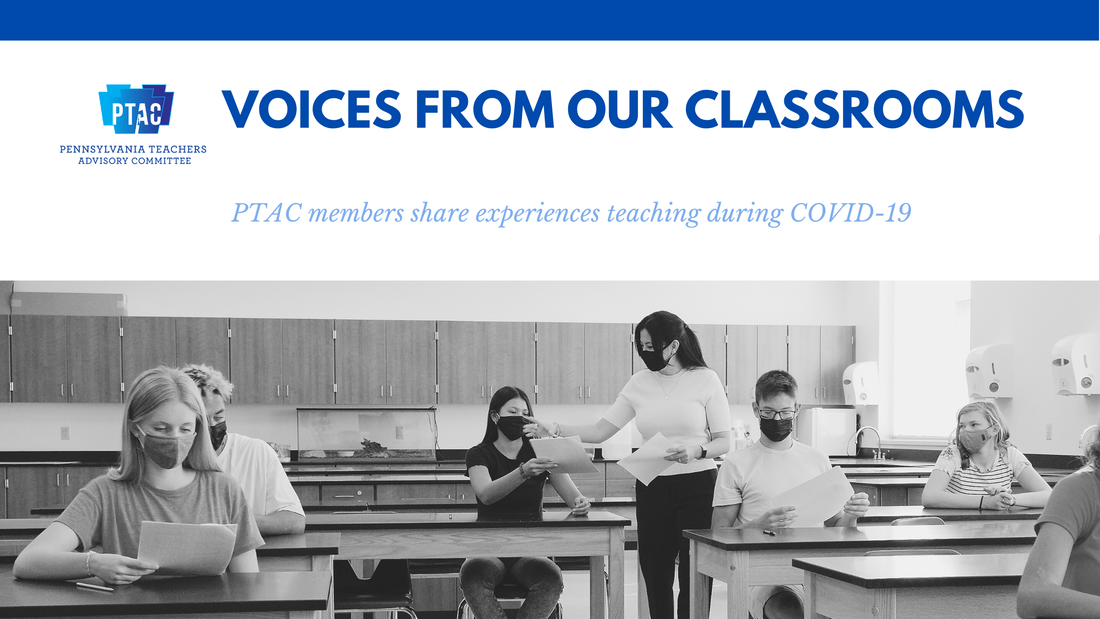BLOG POST BY PTAC MEMBER FELIX YERACE In May of 2019, I was ecstatic to find out I had been admitted to the Master of Applied Positive Psychology (MAPP) program at the University of Pennsylvania. I was excited to be able to use this opportunity to learn more to help improve the education of my students. What I didn’t know then was that less than a year later, I would come to rely upon my learning to help myself, both personally and professionally, get through the Covid-19 pandemic. As parents, teachers, administrators, and students themselves could tell you, the 2020-2021 school year has undoubtedly been one of the most challenging and difficult for students due to health and safety concerns. Delayed starts to the school year, social distancing, cancelled events, mandatory masking, and quarantining are only some of the adjustments students have had to handle in addition to the normal stressors of school. These challenges have exacerbated student mental health and wellbeing concerns. The youth suicide rate has been rising in recent years, especially among young females, and the CDC released statistics in November 2020 show a 24% increase in children ages 5-11, and 31% increase of adolescents 12-17 years old requiring mental health-related hospitalizations since the onset of the pandemic. If there has been one bright spot in the pandemic, it has been increased awareness of a need to act to address youth mental health. In schools, there are increasing calls for mandatory mental health curriculum, and hopefully, these enhanced efforts to address student wellbeing will prove long-lasting. However, these actions have largely overlooked teacher wellbeing. Many teachers have experienced high levels of stress and anxiety this school year, although this is not new. Teaching requires a great deal of emotional labor, and teachers’ stress levels are often at the same level as those experienced by emergency room doctors and nurses. This year, teachers have been expected to handle new sanitary protocols, teach in hybrid environments, and consider their own safety concerns, in addition to all of the other responsibilities their role usually requires. Because of the challenges of this school year, many teachers have seen a decrease in their wellbeing, and this decrease in wellbeing goes beyond what is typically attributed to “burnout.” One study found that 90% of teachers who were "burned out" were in fact suffering from depression. This is in part because the unique pressures of this school year have left many educators facing “demoralization,” which occurs when teachers cannot reap the moral rewards that they previously were able to access in their work. Many of the routine joys of teaching, including student engagement and interaction, have disappeared. The impact of this could cause a critical crisis in education. While typically less than one out of every ten teachers leaves the classroom annually, this year up to 25% of all teachers nationwide may leave the profession. Worse, while enrollment in teacher preparatory programs is already down, the pandemic this school year has caused even more drops in enrollment in teacher training programs as well as other programs like Teach for America. Simply asking educators to engage in “self-care” as a solution to this problem is not enough; it needs to be the responsibility of school leadership, not teachers, to reduce stress and burnout amongst faculty. Gallup, which recently found that less than 40% of US workers are engaged in their work, suggests that employee burnout is caused by five major factors: unfair treatment at work, unmanageable workload, unclear communication from managers, lack of manager support, and unreasonable time pressures. For true wellbeing to take root, more workplaces and organizations need to provide better working conditions rather than placing the burden of self-care on employees, and this is a problem that goes beyond schools as workplaces. However, that does not mean that individuals cannot take steps to improve their own wellbeing. This school year, I found myself relying on my education from Penn to help me at many points. I also found myself teaching an elective on positive psychology for my students which gave me an opportunity to apply some of what I was teaching them to myself as well. Positive psychology offers us many cognitive tools from disputing unproductive thinking, changing our explanatory style, overcoming obstacles, satisficing, finding flow, engaging in prospective thinking, building willpower, cultivating positivity, and developing hope in our lives, as ways that we can help ourselves. There are also many specific actions we can take to improve our wellbeing and help move from languishing to flourishing. While not every strategy listed below will work for you, consider trying some of these as you navigate the remainder of the school year:
Shawn Achor has encouraged millions of people to make positive changes in their lives through his book The Happiness Advantage. In it, he encourages people to engage in a “21-day challenge” in order to develop practices into habits that can be beneficial to them. There are multiple small changes that we can all make in our daily routines to help ourselves, and I encourage you to try some of the ideas suggested above. While educators are busier than ever, finding even 15 to 20 minutes a day to engage in an activity like a Savoring Walk or expressing gratitude can make an impact. Once you find something that works for you, commit to working on it for 21 consecutive days to make it into a habit. It might help if you involved your family, colleagues, or even your students. Both the Greater Good Science Center and Action for Happiness offer monthly calendars with daily actions you can perform to increase your happiness. People interested in learning more can also take the free Coursera concentration on Positive Psychology featuring many of the faculty from Penn’s Positive Psychology Center. To conclude, in their book Resilience: The Science of Mastering Life's Greatest Challenges, Steven Southwick and Dennis Charney write about different factors of resilience, including confronting fears, maintaining an optimistic but realistic outlook, seeking and accepting social support, finding ways to accept what cannot be changed, looking for meaning in the midst of adversity, and maintaining one’s physical health, among other strategies. Perhaps more importantly, they note that 90% of people will, at some point in their lives, be confronted with a serious traumatic event (serious illness or injury, unexpected loss, victim of serious crime, etc.) and that a majority of people will not just recover but actually grow stronger as a result of their experience. Their work reminds me of the Viktor Frankl quote “When we are no longer able to change a situation, we are challenged to change ourselves.” While this year has undoubtedly been challenging, I also recognize this school year has helped me learn and grow as well and that I will be taking some new practices with me into the future. It has also reminded all of us of the importance of relationships, not just with our students, but with our colleagues, friends, and family members as well. Hopefully, it will also help lead to more attention on teacher wellbeing and the long-term work environment of educators.
0 Comments
|
AuthorPennsylvania Teachers Advisory Committee Archives
March 2022
Categories |


 RSS Feed
RSS Feed